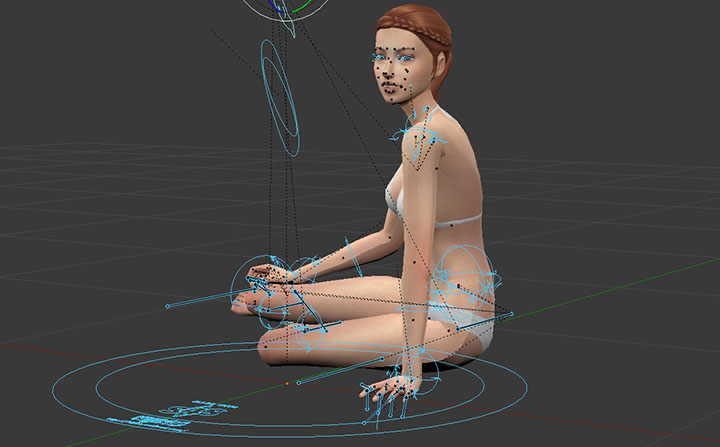
Test your animation again and make sure the bones of the armature are moving with the cloth object. Set the Target for the IK Constraint to be the Empty which lies at the tip of that bone. In Pose Mode select a bone and then click the Add Bone Constraint drop-down button to choose Inverse Kinematics. Snap the roots and tips of each bone to the vertices of the cloth object.

The location of the vertices now determines the location of the Empties.Ĭreate a bone for each Edge of the cloth object's mesh. If you want to change the Display Size of your Empties this can be done from the Empties Context.įirst select an Empty, then Shift-select the cloth object, Tab into Edit Mode, select only the vertex that is to be the parent, and press Ctrl P to make it a Vertex Parent. Use Snapping ( Shift S) to position them exactly where the vertices are (while in their rest position, frame 1). Add Empties and parent them to the cloth's verticesĪdd an Empty for each vertex except the base one. Grab and rotate the object while animation is playing to see the effect.

Play your scene's animation to check that the movement of this skeletal "cloth" is alright. In the Cloth Sim settings enable Pinning and choose your "Pinning" vertex group. Pinning the cloth object with weights allows the hat to be more cloth-like in some areas (the tip) and more rigid in others (the base).Īdd a Cloth Simulation to this mesh object. My cloth object has only three edges and four verts, so I assigned weights of 1, 0.5, 0.33, 0.15 (from base to tip). Assign less and less vertex weight as the vertices get further from the base and closer to the tip. The mesh is extremely simple - just a chain of edges, made in the shape you want your armature to be in its rest position.Īssign a vertex weight of 1 to the base vertex because the cap needs to stay pinned on the head and not fall off.

Make a mesh and give it a Vertex Group for cloth Pinning This can be achieved by parenting Empties to the verts and then setting those Empties as IK targets. The trick is getting the bones of your armature to follow the vertices of your cloth mesh.


 0 kommentar(er)
0 kommentar(er)
